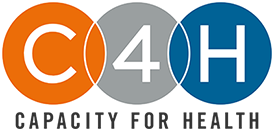The HIV care continuum or HIV treatment cascade is a generally accepted set of best practices for treating patients with HIV. It is a patient-centered methodology for charting the human effects of the virus by establishing the HIV treatment cascade from diagnosis to the ultimate goal of viral suppression. How has the HIV care continuum evolved over the course of our battle against AIDS and why does the treatment cascade still matter to public health officials?
Evolution of the HIV Care Continuum
Dr. Edward Gardner and his colleagues first proposed the HIV care continuum in 2011. In it, they outlined the steps necessary to engage patients in HIV treatment from diagnosis to viral suppression:
- First, patients must understand their HIV diagnosis.
- Second, they must seek help and receive regular treatment.
- Finally, they must receive and adhere to a treatment plan that includes antiretroviral therapy.
With the ultimate goal of achieving viral suppression, HIV researchers described these necessary steps as part of the HIV treatment cascade necessary to reach treatment goals.
The HIV Care Continuum Initiative
The HIV treatment cascade lead to the launch of the HIV Care Continuum Initiative in 2013, which was part of a National HIV/AIDS Strategy. The strategy outlined a three to five-year plan for federal agencies to launch new funding, scientific initiatives, and educational programs to battle the disease. The goal was to impact the virus at every stage of the HIV treatment cascade.
Each of the steps in the HIV Care Continuum is fraught with challenges:
- Getting treatment starts with HIV diagnosis of the infection. However, the only way to know if the person is infected is an HIV test. Healthcare providers on the front lines must do more to increase awareness of the testing process in at-risk communities. Without this first step, the HIV treatment cascade stalls.
- Another roadblock in the cascade is that once a person knows they are infected, they must be connected with an HIV care provider to receive consistent treatment. A key part of this process is that treatment is long-term, and making sure the person receives consistent care over a long period of time can be problematic.
- Getting antiretroviral therapy (ART) is imperative for stopping the reproductive power of the virus. It requires a combination of at least three ART medications from two different HIV drug classes every single day to control the virus. gov says “Treatment with ART can help people with HIV live longer, healthier lives, and has been shown to reduce sexual transmission of HIV by 96%.” But at-risk populations can struggle to maintain these treatments long-term.
- The final step, achieving viral suppression, will not happen without the effort and consistency of regular treatment. But the latest CDC data shows that of the 1.2 million people living with HIV, only 86% were diagnosed. That means one in seven Americans has failed to reach the first stage of the HIV Care Continuum.
Current Status of the HIV Care Continuum
A 2014 Center for Disease Control report stated that only four in 10 people living with the disease are following the HIV treatment cascade as defined by Dr. Gardner. It’s clear that community groups and healthcare workers must intensify their efforts to reach more people with testing while finding new methods for extending consistent treatment in order to reach viral suppression. While we’ve come a long way in our fit against HIV, we still have challenges to overcome and promises to keep.
Contact C4H to help optimize your non-profit’s service delivery team. We can help you win this fight.







